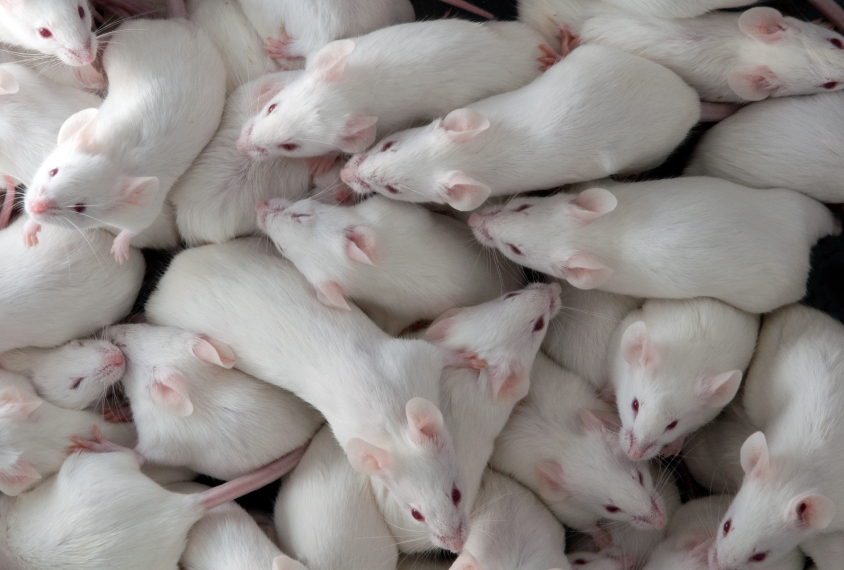
Stuart Wilson / Science Source
THIS ARTICLE IS MORE THAN FIVE YEARS OLD
This article is more than five years old. Autism research — and science in general — is constantly evolving, so older articles may contain information or theories that have been reevaluated since their original publication date.
Tracking dozens of autism-related behaviors in nearly 200 strains of mice, researchers are linking the behaviors to specific genetic regions. They presented preliminary results from this ambitious project yesterday at the 2015 Society for Neuroscience annual meeting in Chicago.
The project turns the typical research approach on its head: Scientists usually introduce a mutation seen in people into mice and study its effect on behavior. In this project, researchers are instead cataloging the vast array of behaviors in mouse strains and trying to trace the behaviors back to their genetic causes.
This method may help resolve the challenge of genetic heterogeneity in studying autism: In mice as in people, the genetic background can be diverse and strongly influence the effect of a particular mutation.
“We want to get a grip on this whole process using mice.” says Martien Kas, associate professor of translational research at Utrecht University in the Netherlands, who presented the findings.
Kas and his colleagues are using a collection of 200 strains bred from 8 inbred strains1. Each set of inbred mice has identical versions of genes on both copies of its chromosome. By contrast, each strain the researchers created has a different combination of genetic variants.
Mouse mapping:
The researchers ran each of these mice through as many as 35 tests of either social or repetitive behavior. The tests range from a simple measure of how often the mice contact each other to algorithms designed to rate a mouse’s preference for one of four toys.
The researchers are ranking the strains on these measures and, using a statistical approach, associating the behaviors with chromosomal variants. So far, they have linked a region on chromosome 7 — the possible mouse equivalent of the autism-linked 16p11.2 region in people — and another on chromosome 10 with repetitive behaviors.
They next plan to map specific times during development when the different behaviors appear. This may help researchers understand what happens in the brain before a particular behavior manifests in the mice.
In one of the first success stories from the project, the researchers found that variants in a region on chromosome 14 prevent mice from recognizing other mice2. This region includes the autism gene PCDH9. Mice lacking PCDH9 also show abnormal sensory responses, such as being startled by a familiar sound and biting when touched. The findings suggest that the mice’s social deficits may stem from these sensory problems, says Kas.
Eventually, the researchers aim to use the mice to find biomarkers that signal problems at a genetic or molecular level matching those in people with autism. To help with that part of the project, they are implanting miniature electroencephalography devices that take a reading of, for example, brain activity in two mice at the moment they come into contact.
For more reports from the 2015 Society for Neuroscience annual meeting, please click here.
By joining the discussion, you agree to our privacy policy.